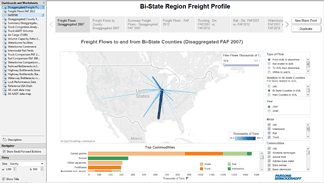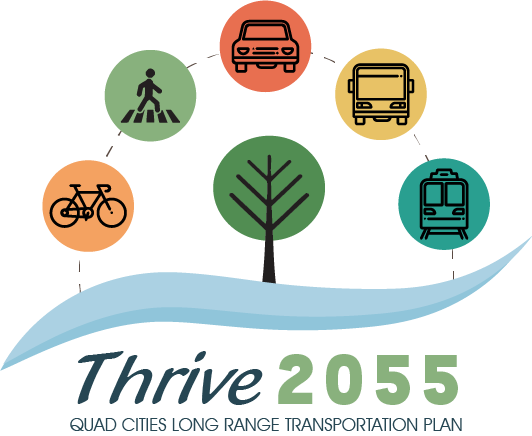July 22, 2015 – Ms. Erika Witzke and Mr. Alan Meyers from Cambridge Systematics, Inc. presented the status of the Bi-State Region Freight Commodity Efficiency Plan to the Commission. The project was initiated 10-months ago to inventory the freight transportation system in the five-county Bi-State Region, assess needs, analyze commodity flows, report findings, and make recommendations for improving the freight transportation system. As part of the assessment, the consultant team utilized the stakeholders committee, industry interviews and a workshop to solidify study recommendations.
Ms. Witzke and Mr. Meyers identified key freight system needs, issues, and opportunities with a focus on the following themes:
- Economy – Use the Bi-State freight system support the region’s economy
- Infrastructure – Maintain and enhance highway system infrastructure
- Operations – Promote freight rail system operational efficiencies
- Access and Modal Options – Increase accessibility and mobility options for the region
- Resiliency – Work toward system resiliency and reliability
As part of the analysis, the consultants developed a regional freight profile and commodity tool. This tool will be turned over to Bi-State staff to utilize for future freight development needs. Ms. Witzke and Mr. Meyers gave a demonstration and provided a suggested framework, using cost-benefit analysis to evaluate different freight modal projects.
The plan identified over $310 million in highway projects that will benefit freight movement as identified in the existing Transportation Improvement Program. There are $101 million identified in the TIP that are shown as unfunded projects. Fourteen new highway projects were identified as part of the planning process. The plan outline plans for an intermodal, transload and/or consolidation facility, as well as rail bridge improvements to accommodate heavier loads and meet federal weight compliance requirements. The consultants suggested a new rail bridge across the Mississippi River, as well as rail spurs and connections from the Iowa Interstate Railroad, along with water port expansion.
Having a freight plan will provide the region with future opportunities to pursue funding. The plan documents all freight recommendations, which will give the ability to monitor implementation regularly and illustrate roles for public and private stakeholders. As follow-up to the planning effort, Bi-State staff plan to continue to build freight relations and foster collaboration with a freight forum and look to building support for plan implementation.



